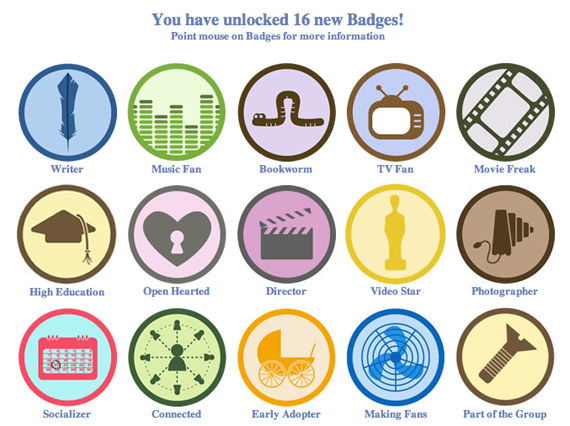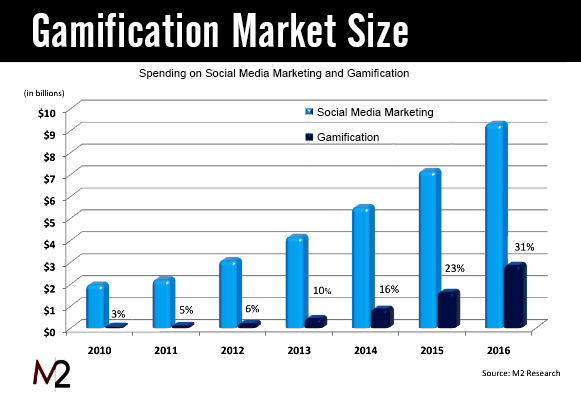It is difficult to define an emerging concept like Gamification, even though it has always existed. Sergio Jimenez Arenas, Business Game Designer and gamification specialist, in an interview with Opinno described it as "the name that has been given to use elements of design, thoughtsand game mechanics to engage people in non-recreational activities". In other words, gamification is to apply one's knowledge of game design to different everyday fields in order to foster user interaction and cause certain wanted behaviors.
What is beyond doubt is that gamification is a tool that companies increasingly approaching with the goal of retaining internal and external stakeholders. According to the 2012 M2 Research report on gamification, it is expected that the gamification industry will rake in 2.800 billion in 2016. Proof of this can be seen the study by IBM (International Business Machines) "Removing Gamification from an Enterprise SNS" which revealed the significant decrease of the use of a corporate social network if game mechanics were eliminated:
Starting with the identification of processes or activities that we want to promote, we can encourage user participation by previously studying their intrinsic motivations and applying the appropriate game rules, which we call game mechanics, divided into: collecting objects, points, classifications, levels and feedback. The enrollment process is to create an attractive reward for the user, to encourage their participation. Badges are excelling within game mechanics. They are insignias or indicators of achievements and skills that can be an important point in the ecology of learning, in connecting theory with dynamic practice and be a reference of personal skills. Specifically, badges can have an impact on:
-
Signs of an achievement.
-
Motivation.
-
Supporting innovation and flexibility.
-
The identity and reputation building.
-
Building a Community.

According to Sergio Jimenez, writer, professor and game researcher, Richard Bartle, applies gamification to the identifying of user profiles:
-
Players "killers" : Beat other players
-
Players "achievers": they like accumulating elements or objects that mark the progress and experience of the game.
-
Players "Socializers": as a means to meet and interact with other players.
-
Players "explorers" :the exploration and discovery of areas or territories.
Although gamification attempts to induce a responses in the user, it is risky to mistake it with the manipulation of the individual or marketing campaigns. Regarding the latter, there is Advergaming(the practice of creating video games to advertise a brand, product, organization, or idea) that gives rise to Game Marketing. Gamification continues its progress with the most important thing being something very simple: the game. Ultimately games have always constituted as a learning tool. The evolution of technologies enables companies to approach consumers, and in turn users choose new ways and means of learning. Meanwhile gamification continues its exponential growth.




